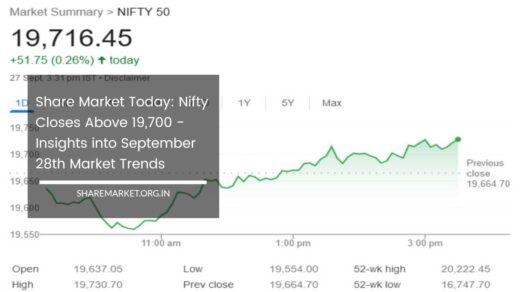Sensex Down 318 Points, Nifty at 24,971; Tomorrow Nifty Prediction

Tomorrow Nifty Prediction
Decline Continues for Second Consecutive Session – What to Expect on October 17
The Indian stock market faced challenges on October 16, witnessing a decline for the second consecutive trading session.
The market remained within a limited range, largely driven by profit booking among investors, particularly in the banking, IT, and auto sectors.
Weak global cues also played a significant role in dampening market sentiment, making it a day of cautious trading.
Market Performance Overview
By the close of trading on October 16, the benchmark indices displayed a notable downturn. The Nifty index fell below the critical 25,000 level amid a widespread sell-off that affected nearly all sectors, with realty stocks being the notable exception.
The Sensex, which tracks the 30 largest companies on the Bombay Stock Exchange (BSE), dropped 318.76 points, or 0.39%, finishing at 81,501.36. The Nifty closed at 24,971.30, down 86 points, or 0.34%.
The session began on a negative note, with Indian indices opening lower due to unfavorable global market trends.
Despite a brief recovery during the early hours, which helped alleviate some losses, persistent selling pressure in key sectors, particularly in auto and IT, eventually drove the Nifty down to nearly 24,900 during intraday trading.
This illustrates the prevailing bearish sentiment among investors, who are increasingly wary of external factors affecting market stability.
Sector Performance
A closer look at sector performance reveals a mixed picture. While sectors such as oil and gas, real estate, and telecommunications managed to close in the green, others like auto, IT, pharma, and media experienced declines ranging from 0.5% to 1%.
The BSE midcap index remained relatively flat, indicating that mid-cap stocks did not see significant movement, while the smallcap index saw a slight uptick of 0.3%.
Among the most affected stocks on the Nifty were Trent, Mahindra & Mahindra (M&M), Hero MotoCorp, Infosys, and Adani Ports, all of which suffered substantial losses.
On the other hand, some stocks that managed to remain resilient included HDFC Life, Dr. Reddy’s Laboratories, Grasim Industries, Bharti Airtel, and HDFC Bank.
This divergence in performance highlights the selective nature of selling, as investors appear to be favoring defensive stocks while offloading those perceived as more volatile.
Expert Insights
Aditya Gaggar, Director at Progressive Shares, provided insights into the market dynamics of the day. He noted that after a sluggish start, the Nifty touched the lower end of its consolidation range, which spurred a brief recovery.
However, this rebound was short-lived, and by the end of the session, the Nifty closed with a loss of 86.05 points at 24,971.30.
Gaggar emphasized that while the power and realty sectors managed to stay afloat, the auto and IT sectors displayed significant weakness.
He also highlighted that the Nifty traded within a narrow range of 24,920 to 25,200. A decisive break on either side of this range is essential for determining the market’s future direction.
This observation suggests that traders should closely monitor these levels, as a breakout could signify increased volatility and a shift in market sentiment.
Prashant Tapase from Mehta Equities echoed Gaggar’s analysis, attributing the market’s negative trend primarily to profit booking in key sectors.
He pointed out that the continuous selling of domestic stocks by foreign investors this month has left local traders feeling restless.
This ongoing trend of foreign selling has contributed to a cautious approach among domestic traders, who are adopting a wait-and-see attitude in light of the current market volatility.
Global Market Influences
The Indian market’s struggles are not occurring in isolation. Global markets have been exhibiting signs of weakness, driven by concerns over inflation, rising interest rates, and geopolitical tensions.
These factors have created a challenging environment for investors, who are grappling with uncertainty about future economic growth.
The recent volatility in global markets has had a ripple effect, leading to a more cautious sentiment domestically.
For instance, fluctuations in crude oil prices, driven by geopolitical developments and supply chain issues, have added to the uncertainty.
As oil is a critical component of the Indian economy, significant changes in prices can have far-reaching implications for inflation and consumer spending.
Additionally, the performance of major global indices can impact investor sentiment and behavior in Indian markets.
What Lies Ahead?
Looking ahead to October 17, market participants will be closely watching both global cues and domestic developments that could influence trading.
Key economic indicators, such as inflation data, corporate earnings reports, and any updates on geopolitical issues, will be critical in shaping market sentiment.
Investors are likely to remain cautious, particularly given the recent trends of profit booking and foreign selling.
This cautious stance may lead to a continued focus on defensive stocks, with market players seeking to mitigate risk amid uncertainty.
The potential for increased volatility remains high, especially if the Nifty breaks out of its current trading range.
Furthermore, traders may look for signs of stabilization in the global economy, as a shift in global sentiment could trigger renewed buying interest in Indian equities.
Market watchers will be particularly attuned to any comments from central banks regarding monetary policy, as changes in interest rates can significantly impact equity markets.
Final Remarks
In summary, the Indian stock market is navigating a challenging environment characterized by declining indices, profit booking, and weak global cues.
As traders prepare for the upcoming session, careful attention to both domestic and international developments will be crucial for navigating potential volatility.
With a critical trading range established, the market’s direction will depend on whether it can break out of this range, signaling either a recovery or further declines.
Investors are urged to remain vigilant and informed as they navigate this complex landscape.

















